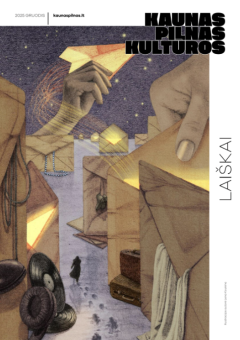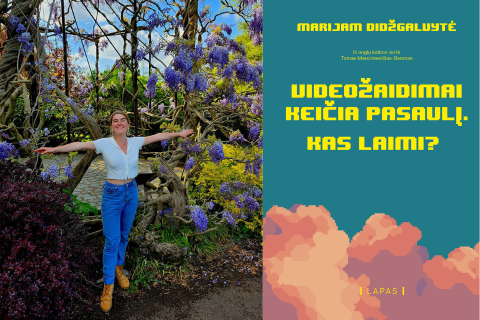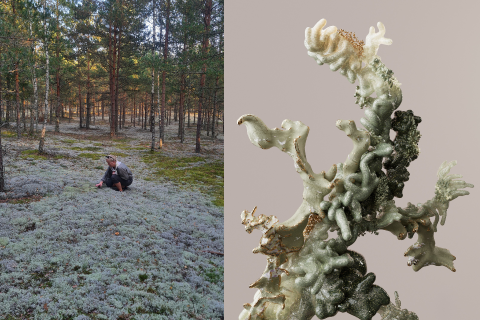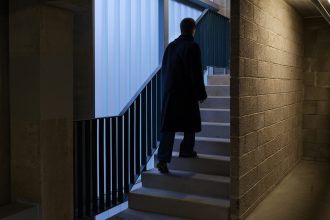A couple of years ago, my friends and I wandered into the Meno Parkas Gallery and were greeted by the premiere of Lucidity, the result of Arnis Aleinikovas’ Magic Carpets residency at the Wrocław Institute of Culture. The ground floor of the gallery became a dance floor filled with rhythmically moving bodies. Later on, I started to meet Arnis more and more often in different scenes – he explores interdisciplinary arts and is interested in painting, new media, performative arts, and electronic music. In short, he wanders between different fields and allows himself to experiment – both in the academic environment, working and teaching at Vytautas Magnus University, Vilnius Academy of Arts, and Kaunas University of Technology, and in creative processes.
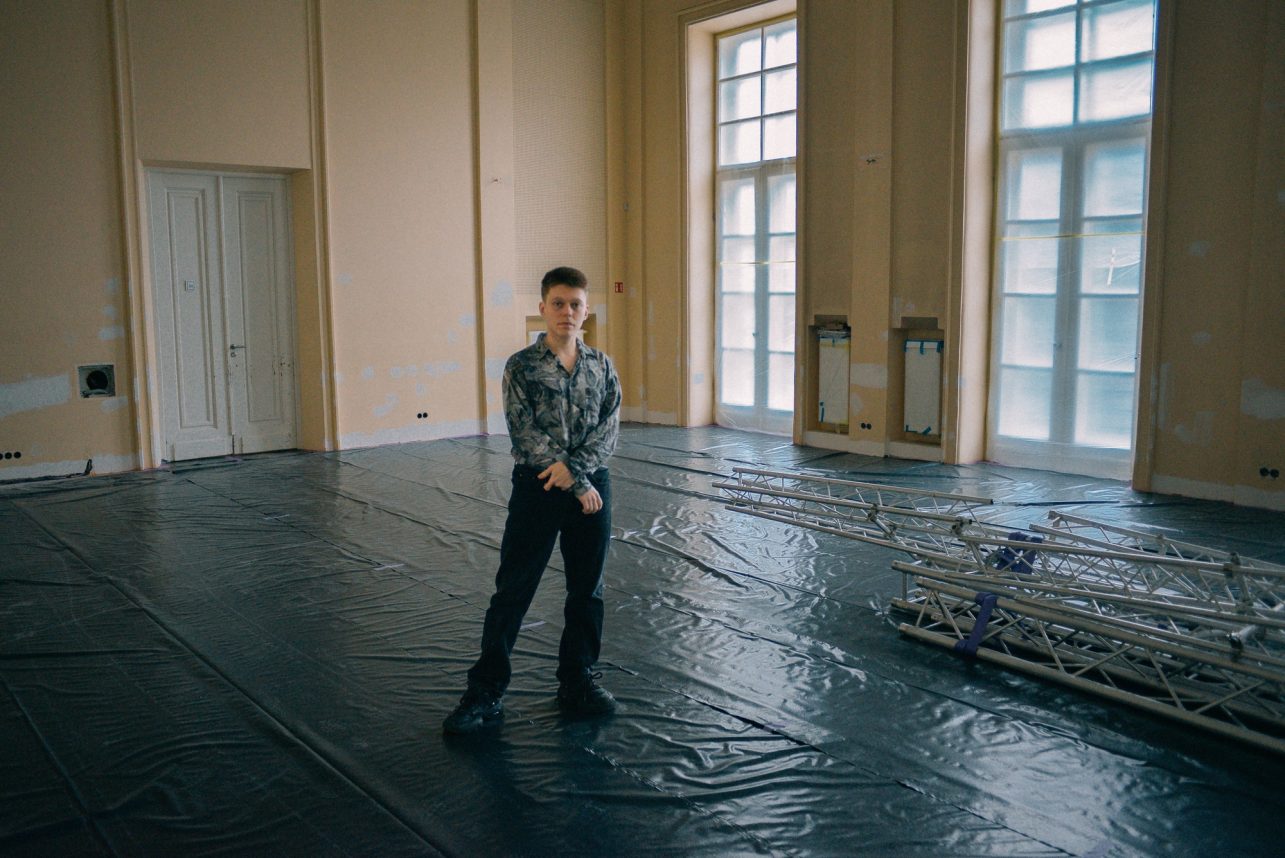
Your work has been presented at various theatre and new media festivals in the United States, Canada, Great Britain, Germany, France, Finland, Portugal, Poland, Georgia, Slovenia and Romania. How did this creative journey begin?
I come from Kėdainiai, which is not only a small town but also quite conservative. I felt like I couldn’t breathe there, and, over time, I even started feeling constrained in Lithuania as a whole. I knew that one day, I would spread my wings and land somewhere else. It took a while, but after completing my bachelor’s degree in acting at Vytautas Magnus University, I started traveling across Europe in search of new experiences and opportunities. One of my first major stops was Germany. Immediately after graduating, I began working with theater director Łukasz Twarkowski, who has won four Golden Stage Crosses. After staging Es war einmal … das Leben at Schauspiel Hannover, we moved on to Respublika at the Lithuanian National Drama Theater. These experiences allowed me to look at theater and art from a slightly different angle.
During my undergraduate years I was taught that theatre was Mikhail Chekhov or Konstantin Stanislavsky. Later, Artūras Areima and Vilma Raubaitė suggested a more alternative view, but it took me a while to realize that art has no boundaries in principle. People create in different ways, times change, theatre changes and the needs of the public change. With these thoughts in mind, I started looking for new paths in my career and work and decided to continue my studies, this time in Prague. By studying alternative theatre directing, I started to realize that theatre and art in general can start from different points and be very diverse. This helped me to get out of narrow perceptions, discover the margins and the joy of talking about today’s issues.
Alongside my studies, I created a performative film Pulsas with like-minded collaborators, focusing on the issue of sexual violence experienced by both men and women. I’m glad that the film is still being screened at international film festivals, has won several awards in Europe, and has drawn attention to a topic that is not widely discussed in society. During my studies in Prague, I became bolder – I started responding to various open calls more often and took part in artist residences across different European countries. I must admit that after these experiences I realized that I was much better at working abroad than in Lithuania.
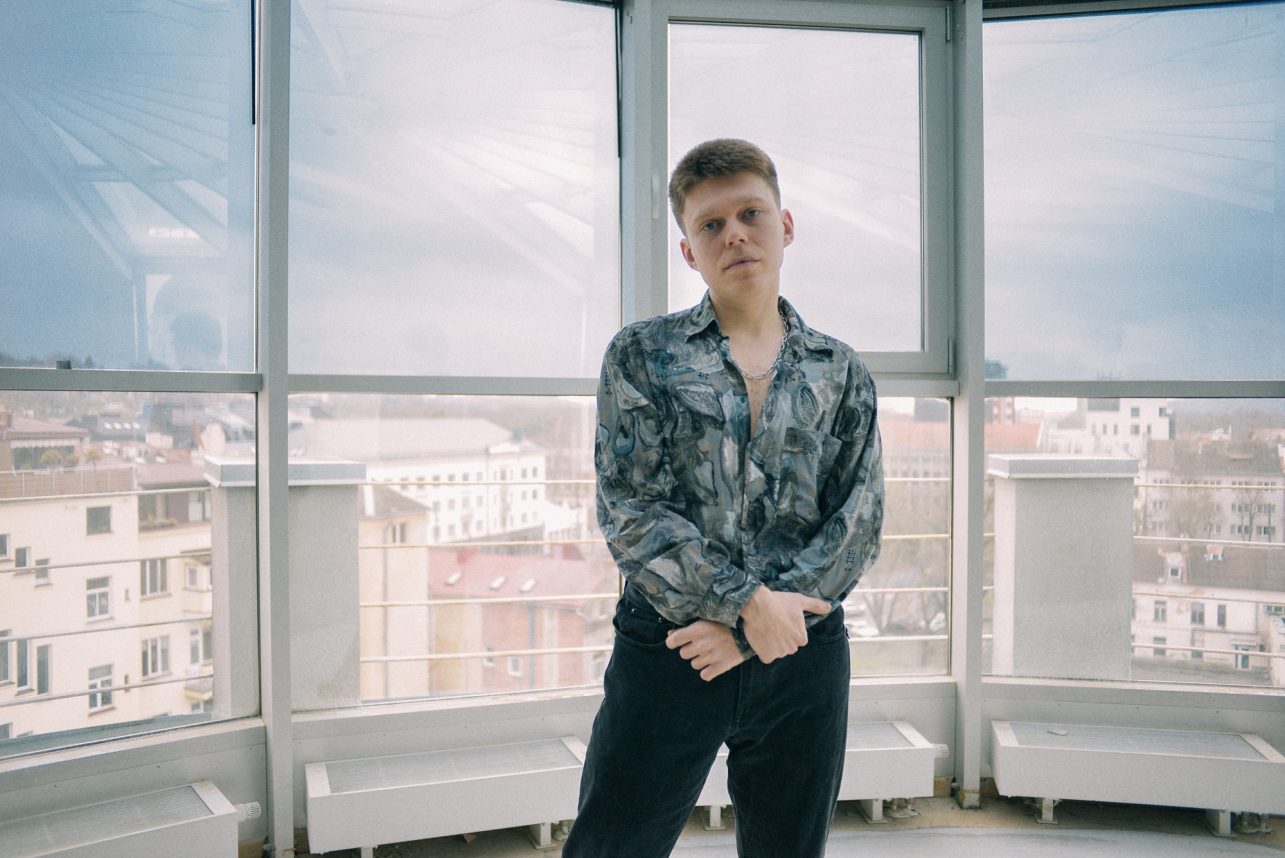
You can be found in many artistic disciplines. Isn’t it difficult to keep moving from one context to another, or is it inspiring to know that you can express yourself in different art forms: cinema, poetry, electronic music, and theatre?
What really stuck with me was Lukasz Twarkowski’s words, “If I could tell you everything I want to create, I wouldn’t create plays.” This thought was an important discovery for me, and it was like a confirmation of what I had been thinking and feeling. Until then, it seemed that creativity had to be clearly defined, conforming to “norms”, but this approach led me to look at creativity more broadly. We can write some things down and put others into music, yet others we can paint. One kind of art resonates in Australia, another in Latvia. I never sit down and think about what I should create – it comes naturally, and with specific ideas comes the field that seems most suitable for it.
You spent your undergraduate years in Kaunas – I’m curious what were the first steps you had to take to establish yourself in the cultural field?
I owe my strong first steps to the director Gytis Padegimas, who invited me, a second-year student, to act in Kaunas City Chamber Theatre. This opened a lot of doors. I started to be more and more active in the art scene, got to know theater beyond the confines of my studies, attended gatherings, and met professionals in the field. In my fourth year, I also started visiting visual art exhibitions more frequently, further expanding my network and establishing connections with coordinators from various institutions, from Meno Parkas to the Kaunas Biennial.
How do you reconcile your creative freedom with what the institutions demand?
I see more opportunities abroad, such as open calls, which are still quite rare in Lithuania. Here, galleries or theatres often decide which exhibitions and performances to show, and it is difficult for young artists to get a spot. In the field of visual art, I would single out Meno Parkas, the Kaunas Biennial, whose Magic Carpets project focuses on young artists and offers residencies both in Lithuania and in partner countries, and the Kaunas City Chamber Theatre, which organizes an open call for play sketches every year as part of the Išeities taškas festival.
I wish all institutions more open calls, unexpected and intriguing turns, more liberalism and transparency. Czesław Miłosz, speaking about Paul Cézanne, said, “After all, there were many thousands of equally hard-working and humble artists who often lived next to us, whose names don’t mean anything today.” I wish that those names would be given at least one opportunity to present their work and be heard, because perhaps that one opportunity will be a steppingstone to new horizons and greater self-confidence.
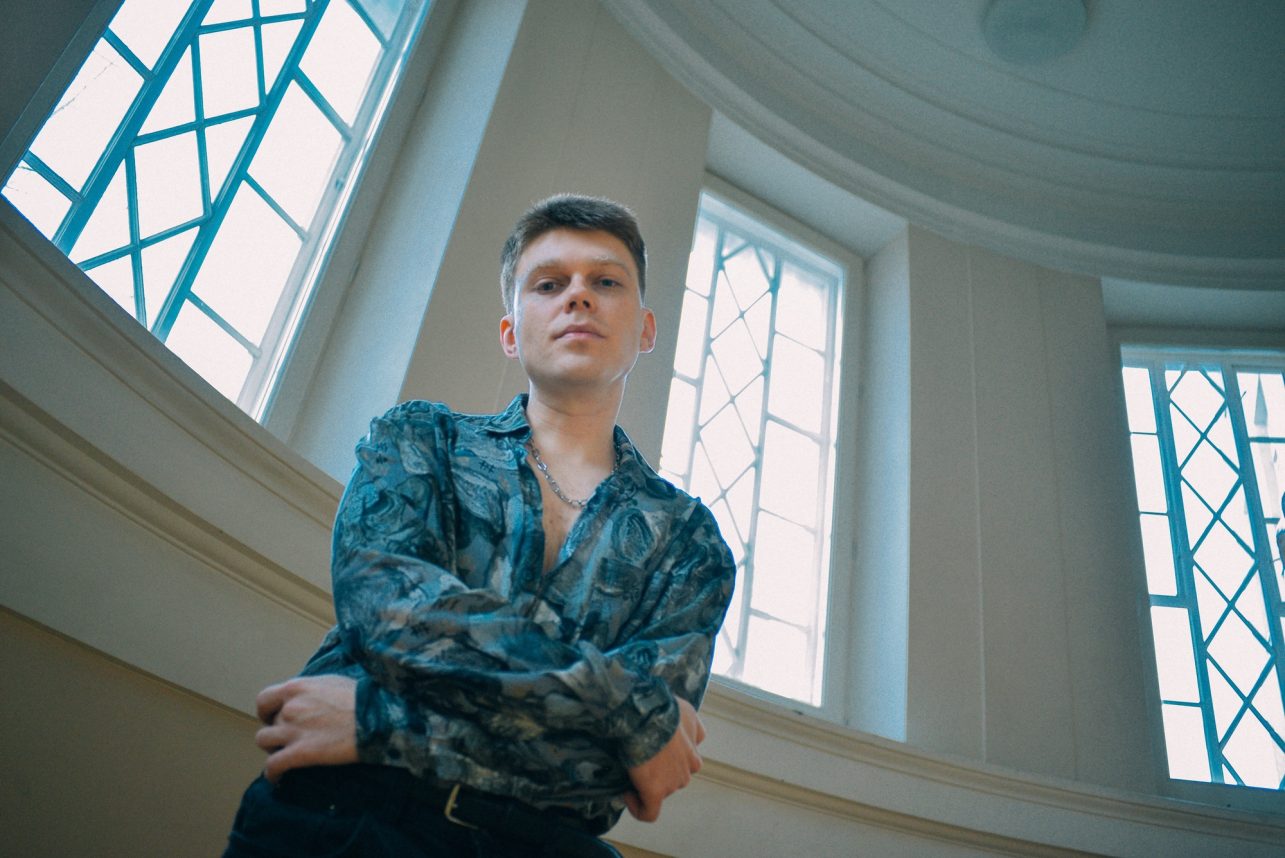
Have you ever felt a disconnect when collaborating with older artists or institution representatives? Or has constructive dialogue always developed fairly easily?
I never placed too much importance on such things – perhaps because I found myself in the art scene at a very young age and was simply happy to be there. But of course, certain thoughts cross my mind, especially when I come across statements from seasoned figures in the field trying to diminish young artists’ knowledge or abilities. Still, I see that things are changing, and for the better.
As for constructive dialogue – both yes and no. I believe that it depends very much on one’s personal goals. For example, you may have a brilliant idea, but there is always the question of how you will try to implement it – whether you will be brazenly looking for as much money as possible, or whether you will be trying to find a way of making it happen at the lowest possible cost. The topic of money in the cultural sector is a frequent and relevant one. Culture and art have probably never been a priority for any country, so both institutions and artists constantly face financial challenges. In my opinion, the most important thing is to be able to present your ideas well and to be open to the changes that may be needed to implement your plans.
Have you ever faced prejudice due to your age?
Probably more than one person has thought about it, but no one has ever directly communicated it to me. In most open calls – both in Lithuania and abroad – artists are asked to provide as much information as possible about themselves, their work, experience, and education. Imagine applying for a contemporary art showcase in the U.S., where the organizers are hearing your name for the first time. I have little doubt that they would find those with prior exhibitions at festivals or galleries, as well as a formal artistic education, more credible than those just starting out. Personally, I like to stay ahead of the game. For example, while preparing for the interdisciplinary arts festival JA FEST 2024, I reached out well in advance. I sent emails with detailed information, shared my CV and portfolio, outlined my vision, and event plans, and introduced all participating artists. My goal was to leave as little room as possible for unfavorable interpretations by decision-makers. I truly believe this helped secure multiple positive responses and ultimately organize a successful festival.
Tell us more about JA FEST 2024. Why do you think it belongs in Kaunas?
This festival was born in Portugal, in Lisbon, in 2023, in the international JÁ theatre. The focus at that time was on theatre and workshops. Alongside the performances, the festival presented the exhibition-installation 4 Journalists (curated by Dan Cotterall). The installation was about women journalists who were killed by different regimes just for doing their job: criticizing the government and publishing unfavorable information. This exhibition was a good reminder for me of how fragile everything is, and at the same time, it raised the question of whether we can really talk openly about whatever we want. We live in a democracy, we can allow ourselves to speak out, to express ourselves freely, but we have neighbors where such things are forbidden or even considered criminal.
A year later, the festival organizers decided to take the exhibition abroad. I was the first to get the call, as they wanted to come to Kaunas. I immediately called Eglė Rušinskaitė from the Kaunas Cultural Centre of Various Nations, and we soon got to work. In parallel, together with Suresh Nampuri (President of JÁ Theatre), we decided that in addition to the installation, it would be great to introduce young Lithuanian artists, bring a selection of Portuguese theatre productions that are rarely seen in Portugal, local and international films, and to have a discussion about justice and human rights. The installation has thus developed into a week-long festival of interdisciplinary art. The focus was on hidden truths and themes that are often avoided. The main visual art exhibition was housed in the Mykolas Žilinskas Art Gallery, where visitors were invited to meet young and established artists from a wide range of visual art disciplines. The plan is to hold the festival in several countries simultaneously, leaving the visual art showcase in Kaunas.
What changes do you think need to be made in the institutions to make it easier for young people to find their place in the art field and to get more opportunities?
There should be more open calls that provide not only space but also additional budget to support the creation of the artwork, as done by many contemporary art organizations abroad. I think that’s what I would wish for all institutions. And for young artists, I’d encourage them not to be afraid to share their work publicly. Art institutions cannot exist without artists, and to be discovered, you need to remind people of your work from time to time. I understand that everybody would like to show their work in modern art museums or prestigious theatres, but these things are not necessary for being heard or discovered. Sometimes, things are much simpler than we think – we just tend to hold ourselves back.
